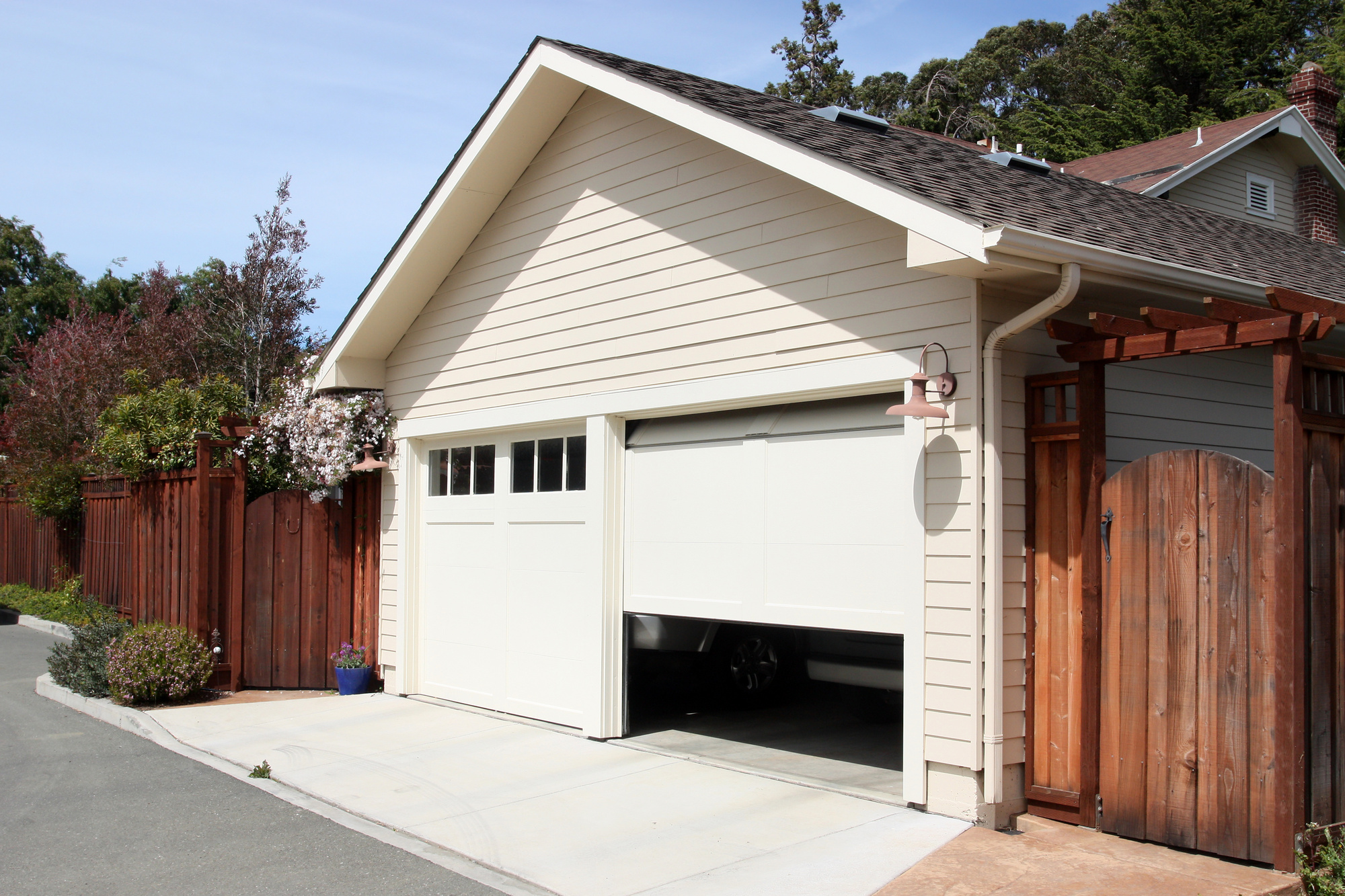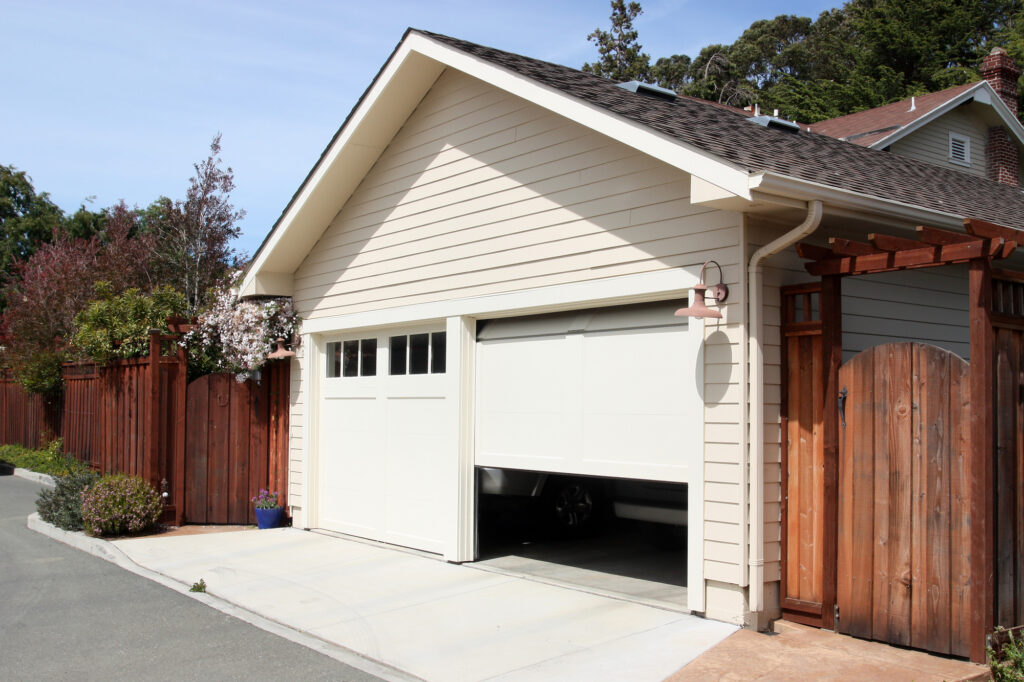Your garage door goes up and down as often as four or five times a day, and most of us give little thought to how it’s happening. We push the button and expect the springs to do their job and move that door for us.
Many homeowners overlook their door’s springs in doing regular maintenance. But understanding the two types of garage door springs and how they function is an important piece of keeping them working properly. Let’s take a look at both and how they work.
Garage Torsion Springs
Torsion springs coil around a metal shaft directly above the door itself and use torque to raise and lower the door. The shaft or torsion bar is attached on either end to a drum, which holds the lift cable.
The springs attach to the torsion bar on one end and a center plate on the other. When the door closes, the drum and bar rotate, tightening the spring into a loaded state. When the door opens, the tension on the spring releases to assist in lifting the door’s weight.
There can be up to four springs on the bar depending on the width of the door.
Garage Extension Springs
You’ll find extension springs running along the horizontal tracks above your head. When the door closes, the springs stretch out. When the door opens, the tension in the coil releases to pull the door up as the coils go back to their resting state.
The springs are placed one on each side and operate independently of each other. This allows you to adjust one or the other as needed to balance the door.
The more a coil extends, the more force is stored in it, so safety cables are part of an extension spring setup. If an extension coil breaks under pressure, it can fly with enough force to go through a double layer of sheetrock.
Which Types of Garage Door Springs Are Best?
In the battle of torsion vs extension springs, is one a true winner? Extension springs fall on the less expensive end of the scale, so you’ll often see them in new home construction. You’ll want the extra assurance of the safety cables in place and expect them to have a shorter lifespan than torsion springs.
Torsion springs tend to be safer since they have fewer exposed parts. They do cost more up front but should last longer than extension springs.
Unless you’re replacing your entire door, any garage door spring replacement you do can only use the type of spring you already have.
Time to Check Your Springs
Your garage door springs supply the muscle to open and close the door no matter which type you have. Getting familiar with your door and whether you have torsion or extension springs helps if you have to do any repairs or adjustments to the door.
Now that you know more about the types of garage door springs, check out other articles on this site for more tips on caring for your garage door and other home improvement projects.





Leave a Reply
You must be logged in to post a comment.